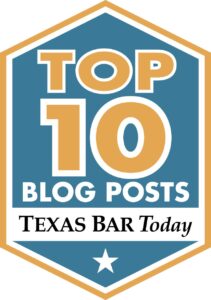Using topic sentences and headings
My books: Legal Writing Nerd and Plain Legal Writing
Many lawyers write memos, trial and appellate briefs, or briefs in administrative matters, and those documents contain a section called the Statement of Facts. Naturally, a Statement of Facts should be credible, ethical, and persuasive, but it should also flow—guiding the reader through the events in an easy-to-follow, coherent way. To accomplish those goals, legal writers can use two basic yet effective tools: topic sentences and headings.
Dates aren’t topics. I’ve seen Statements of Facts in which the first sentences of a series of paragraphs all begin with a date. The practice sometimes continues for three, four, or five paragraphs in a row. For example, three consecutive paragraphs might begin like this:
- On September 30, 2019, …
- On December 17, 2019, …
- On February 22, 2020, …
Two problems: First, it’s common advice to omit a flurry of dates. “Avoid over-chronicling—most dates are clutter,” says Judge Mark Painter. “We don’t know what … if any, dates we should remember.”[1] Second, even when dates are relevant, they’re usually not important enough to justify giving them primary placement. When you begin a paragraph with a date, you’re implying that the date is important—topical. That’s usually not true.
So write a topic sentence that encapsulates the main idea of the paragraph. If you need chronology, work the date in later or use relative-time references:
- BK Events catered a successful party for Mesa, Inc. in September 2019….
- Three months later, Mesa contracted with BK to cater another party in May 2020….
- Ultimately, in light of the Covid-19 pandemic, Mesa sought to cancel the contract on February 22, 2020….
Witnesses aren’t topics. I’ve seen Statements of Facts in which the first sentences of a series of paragraphs all begin with a name—often that of a witness. In a brief responding to a claim for benefits, three consecutive paragraphs might begin like this:
- Cynthia Rao examined the claimant and testified that …
- Robert Eaton, a psychiatrist, examined the claimant on …
- Chris Serna, a vocational expert, interviewed the claimant …
Again, two problems: It’s good advice to avoid presenting the facts by witness. “Never include the deadly witness-by-witness summaries of testimony that some brief-writers favor,” says Judge William Whitbeck.[2] More to the point, the witnesses are rarely the topics you’re writing about, and if they aren’t, they don’t deserve primary placement.
Rather than giving witness names prominence in the opening sentence, create true topic sentences. Here, you could use the impairments that the claimant alleges, and other topics as appropriate. It might look like this:
- The claimant asserted a physical impairment based on lumbar spinal stenosis….
- A second alleged impairment, based a depressive disorder, relied on the testimony of psychiatrist Dr. Robert Eaton….
- Yet a vocational expert testified that reasonable opportunities for work existed in the national economy….
For readability and flow, topic sentences often work better than focusing on dates and names.
Try headings. If the Statement of Facts is long or complex, you can aid the reader and improve the flow with headings. After all, few of us want to read long, unbroken blocks of text. You can use short topic headings with boldface text, initial capitals, and no punctuation:
- Background
- Previous Claims
- Alleged Impairments
You can use point headings, too—typically boldface assertions using sentence case and ending with a period:
- The psychiatrist’s testimony rebuts the claimant’s asserted impairment based on a depressive disorder.
Both techniques, topic sentences and headings, require thought and effort by the writer, but they pay off with a more readable and persuasive Statement of Facts.
My books: Legal Writing Nerd and Plain Legal Writing
_____
[1] Judge Mark Painter, The Legal Writer: 40 Rules for the Art of Legal Writing 33 (2d ed. 2003).
[2] Quoted in Bryan A. Garner, Judges on Briefing: A National Survey, 8 Scribes J. Legal Writing 1, 26 (2002).
